About two weeks ago, California’s legislature passed, and Gavin Newsom signed, a law prohibiting essentially deepfakes designed to influence the election. Mind you, we will dive much deeper into this law in a minute, but that suffices as a ‘thumbnail’ summary for you for now. And the good news tonight is that it has been struck down.
The drive to pass this law started when a user of The Social Media Site Formerly Known As Twitter (‘TSMSFKA Twitter’) who went by '@MrReaganUSA' created produced an ad parody, which was clearly labeled parody, which he uploaded to TSMSFKA Twitter and other social media as follows:
Kamala Harris Campaign Ad PARODY pic.twitter.com/5lBxvyTZ3o
— Mr Reagan 🇺🇸 (@MrReaganUSA) July 26, 2024
As we previously covered, Elon Musk shared this ad and Gavin Newsom threw a hissy fit over it.
Manipulating a voice in an “ad” like this one should be illegal.
— Gavin Newsom (@GavinNewsom) July 29, 2024
I’ll be signing a bill in a matter of weeks to make sure it is. pic.twitter.com/NuqOETkwTI
Seriously, if you haven’t watched the offending ad, do it now, if only to understand the context. It is obviously a parody, with ‘deepfake’ audio mixed with real audio. Even without the text introducing it that states that it is parody, it is obviously parody because it has the deepfake Harris describing what she is doing, mixed with some real audio of her doing it. Any person with more than two brain cells to rub together would figure out there was no way she actually would narrate an ad criticizing herself so bitingly. We are honestly not sure she has the sense of self-awareness to even recognize her many, many faults.
In any case, Newsom did exactly as promised and passed his anti-Deepfake law. The actual human behind ‘Mr. Reagan,’ Christopher Kohls, sued in the case of Kohls v. Bonta and we recently heard the good news from one of his lawyers:
Victory for @mrreaganusa. Preliminary injunction granted. https://t.co/tWEhpQD6EM https://t.co/fki4qOTvhX pic.twitter.com/a5ZBuiU43I
— (((tedfrank))) (@tedfrank) October 2, 2024
Mr. Frank doesn’t explain the context, but Yashar Ali does:
NEWS
— Yashar Ali 🐘 (@yashar) October 2, 2024
Judge blocks California deepfakes law that sparked Elon Musk-Gavin Newsom row
A federal judge on Wednesday blocked a California measure restricting the use of digitally altered political “deepfakes” just two weeks after Governor Gavin Newsom signed the bill into law.
The… pic.twitter.com/GgLIcUFwT7
The cut off text reads:
A federal judge on Wednesday blocked a California measure restricting the use of digitally altered political ‘deepfakes’ just two weeks after Governor Gavin Newsom signed the bill into law.
The ruling is a blow to a push by the state’s leading Democrats to rein in misleading content on social media ahead of Election Day.
The post goes on to link to a Politico article by Tyler Katzenberger and if you look at it, you will see that the quoted text from Ali is cut and pasted from the article, and not Mr. Ali’s words. But look at the emphasis here. To Katzenberger, it is a blow to battling misinformation, instead of a blow for freedom of expression.
After all, the post that started all of this is absolutely protected free speech under the First Amendment and it’s not even close. So, here’s the sequence of events. Someone engages in protected expression regarding the current Democratic nominee for the President of the United States of America. The head of a major social media platform promoted it by reposting it, as is. The Democratic governor of a state then vowed to make this protected speech a crime, got his state legislature to pass a law saying so, and signed it. (And really, do we think for one second that they would have done this if the ad was in Donald Trump’s voice and making fun of him?) It’s hard to imagine a more frightening and direct assault on freedom of expression, and we should all be thankful that this judge struck this law down, but Politico portrays it as an attack on truth or something.
Recommended
And as for the moral panic over ‘misinformation’ we will be the first to say that obviously false statements with respect to an election is always bad. But the question always is ‘who determines what the truth is?’ To quote the Supreme Court:
If there is any fixed star in our constitutional constellation, it is that no official, high or petty, can prescribe what shall be orthodox in politics, nationalism, religion, or other matters of opinion or force citizens to confess by word or act their faith therein. If there are any circumstances which permit an exception, they do not now occur to us.
West Virginia Bd. of Ed. v. Barnette, 319 U.S. 624 (1943)
And as you will see, the judge was absolutely right to block this law. Ted Frank links to a copy of the opinion directly, and we think it is worth a trademarked Aaron Walker Deep DiveTM…
(It’s not actually trademarked.)
… so buckle up as we go through it.
The law at issues is referred to as AB 2839. As Jonathan Turley noted earlier, this was one of a number of laws signed by Newsom:
A video creator is suing the State of California after his use of a parody of Vice President Kamala Harris was banned. The new state law raises serious and novel constitutional questions under the First Amendment. https://t.co/bHFbmxaSFU
— Jonathan Turley (@JonathanTurley) September 22, 2024
From the article:
Gov. Gavin Newsom signed A.B. 2839, expanding the time period that bars the knowing posting of deceptive AI-generated or manipulated content about the election. He also signed A.B. 2655, requiring social media companies to remove or label deceptive or digitally altered AI-generated content within 72 hours of a complaint. A third bill, A.B. 2355, requires election advertisements to disclose whether they use AI-generated or manipulated content.
Toward the beginning of his opinion, Judge Mendez (a Bush Jr. appointee), writes a summary of the opinion as follows:
AB 2839 does not pass constitutional scrutiny because the law does not use the least restrictive means available for advancing the State’s interest here. As Plaintiffs persuasively argue, counter speech is a less restrictive alternative to prohibiting videos such as those posted by Plaintiff, no matter how offensive or inappropriate someone may find them. ‘‘Especially as to political speech, counter speech is the tried and true buffer and elixir,’ not speech restriction.’ Motion for Prelim. Inj., p. 13 (citations omitted), ECF No. 6-1.
We normally cut out most citations, but we wanted to include this one because as a lawyer, when the judge quotes from your brief or motion in a positive way, you can’t help but feel proud. Mr. Kohl was extremely well represented.
But unless you are seeped in First Amendment law, we admit that what the judge is actually saying in his summary can be a bit hard to understand. So let us explain. Content based restrictions on freedom of expression have to, at the least, pass what is called the strict scrutiny test. That means it has to be narrowly tailored to serve a compelling purpose. And part of a law being narrowly tailored is the requirement that it use the least restrictive alternative. In other words, if you are trying to address a problem created by people’s expression, you have to pick the least restrictive alternative. And, basically, this Court has said that doing nothing and letting the ‘market of ideas’ sort things out is the least restrictive alternative.
But the funny thing is that this doesn’t actually sum up the opinion. That is only one of the problems the court identifies with this law. But let’s start with the law itself. Here’s the raw text:
(b) (1) A person, committee, or other entity shall not, during the time period set forth in subdivision (c), with malice, knowingly distribute an advertisement or other election communication containing materially deceptive content of any of the following:
(A) A candidate for any federal, state, or local elected office in California portrayed as doing or saying something that the candidate did not do or say if the content is reasonably likely to harm the reputation or electoral prospects of a candidate.
There is a section inserted in here that makes it clear that this applies to any candidate for President or Vice President that appears on a California ballot. Then the law goes on with its list of prohibitions:
(B) An elections official portrayed as doing or saying something in connection with an election in California that the elections official did not do or say if the content is reasonably likely to falsely undermine confidence in the outcome of one or more election contests.
(C) An elected official portrayed as doing or saying something in connection with an election in California that the elected official did not do or say if the content is reasonably likely to harm the reputation or electoral prospects of a candidate or is reasonably likely to falsely undermine confidence in the outcome of one or more election contests.
(D) A voting machine, ballot, voting site, or other property or equipment related to an election in California portrayed in a materially false way if the content is reasonably likely to falsely undermine confidence in the outcome of one or more election contests.
(2) Notwithstanding subparagraph (A) of paragraph (1), this section does not apply to a candidate portraying themself as doing or saying something that the candidate did not do or say if the content includes a disclosure stating ‘This ____ has been manipulated.’ and complies with the following requirements:
(A) The blank in the disclosure required by paragraph (2) shall be filled with whichever of the following terms most accurately describes the media:
(i) Image.
(ii) Audio.
(iii) Video.
(B) (i) For visual media, the text of the disclosure shall appear in a size that is easily readable by the average viewer and no smaller than the largest font size of other text appearing in the visual media. If the visual media does not include any other text, the disclosure shall appear in a size that is easily readable by the average viewer. For visual media that is video, the disclosure shall appear for the duration of the video.
(ii) If the media consists of audio only, the disclosure shall be read in a clearly spoken manner and in a pitch that can be easily heard by the average listener, at the beginning of the audio, at the end of the audio, and, if the audio is greater than two minutes in length, interspersed within the audio at intervals of not greater than two minutes each.
(3) Notwithstanding paragraph (1), this section does not apply to an advertisement or other election communication containing materially deceptive content that constitutes satire or parody if the communication includes a disclosure stating ‘This ____ has been manipulated for purposes of satire or parody.’ The disclosure shall comply with the requirements set forth in subparagraphs (A) and (B) of paragraph (2).
We’ll stop there for now, but the statute broadly contains prohibitions on removing those warnings by others, allowing for injunctions to stop so-called misinformation and even allowing for money damages. We will get to that, later.
And its also important to note what the judge was deciding. The judge was not deciding the entire case. He was deciding whether or not to grant a preliminary injunction. That is an injunction early in the case—but, crucially, after giving both sides a chance speak—that is designed to stop a violation of the law before it happens.
The other important thing to note is that this case is what is called a ‘facial challenge’ to this law. As we have said before, in most contexts, that means you have to show that there are no set of facts where the law is constitutional. But in the special context of the First Amendment, the plaintiff has to only show that the law’s unconstitutional applications substantially outweigh its constitutional ones. It’s a bit of a fuzzy test, but its easier to meet than the usual test and the reason why is because it is so vital to have a free and unimpaired discussion in our society.
And, here’s an important point that Tim Walz doesn’t seem to understand. False statements are not automatically stripped of protection under the First Amendment. That’s literally the whole point of US v. Alvarez, 567 U.S. 709 (2012), which is known as the Stolen Valor Case. It is basically the entire reason why Walz couldn’t be sent to prison as we noted previously on TSMSFKA Twitter:
Nice profile, there, @RepTimWalz
— (((Aaron Walker))) (@AaronWorthing) August 12, 2024
Here is a screenshot in case you delete it (pic)
Your spokesperson says that you misspoke all the times you lied about your record. I am dyslexic but I have never mistyped something that badly as you did in your own profile. It’s almost as if… pic.twitter.com/4n56GuHvsU
The cut off text reads:
It’s almost as if you’ve been deliberately lying about your own record.
I remember you once saying that you thought ‘misinformation’ was not protected by the first amendment. I remember correcting you by citing U.S. v. Alvarez. Here’s a link to that opinion: https://scholar.google.com/scholar_case?case=16171579677750083150&q=alvarez&hl=en&as_sdt=6,47
But you know we lawyers call that case?
The Stolen Valor case.
In it, the Supreme Court dealt with a man who lied about his service record. As despicable as his lies were, the Supreme Court said that Congress could not make it a crime because his lies did not cause the kind of harm that the constitution recognizes such as what is caused by fraud or defamation. In other words, lying in general cannot be prohibited by the constitution, only certain categories of falsehoods that cause specific constitutionally recognized harms. Contrary to what you think, there can’t be a ministry of truth in America.
You would think, just out of self-interest, you would learn something about the precedent that keeps you from going to prison, but you do you.
So, even deliberate lying can only be punished if it causes specific kinds of harm and defamation and fraud are two examples of false statements that cause the kind of harm the law can punish.
The problem in the Kohls case is that they are going beyond what Alvarez said. From the opinion:
While Defendants attempt to analogize AB 2839 to a restriction on defamatory statements, the statute itself does not use the word ‘defamation’ and by its own definition, extends beyond the legal standard for defamation to include any false or materially deceptive content that is ‘reasonably likely’ to harm the ‘reputation or electoral prospects of a candidate.’ … At face value, AB 2839 does much more than punish potential defamatory statements since the statute does not require actual harm and sanctions any digitally manipulated content that is ‘reasonably likely’ to ‘harm’ the amorphous ‘electoral prospects’ of a candidate or elected official[.]
(Citations omitted.) In other words, if this was simply an anti-defamation law this might be okay, but it is going beyond defamation in several ways. For instance, defamation actions are actions purely for loss of reputation, not harm to your chances of winning an election.
Furthermore, in defamation actions you generally have to prove that your reputation has actually been damaged. There are exceptions to that rule, such as falsely accusing a person of a crime, which the courts call defamation per se (translated roughly to mean defamation ‘in and of itself’) and the courts assume that damage is being done to your reputation. But this law doesn’t care whether or not it is defamation per se or not, it just allows the courts to find this law has been violated if it believes harm is merely likely, instead of requiring it to be proven as is the requirement in most cases alleging defamation.
And more basically it goes beyond the damage to reputation that is integral to defamation actions to the more amorphous concept of harming the electoral prospects of a candidate. The same can be said for the damage that it is ‘is reasonably likely to falsely undermine confidence in the outcome of one or more election contests.’ The Court also noted that in many cases this would really amount to an action for ‘libel on government’ and that was strictly forbidden in Supreme Court case law.
Then the Court gets back to the issue of narrow tailoring, and we think that we have covered much of it already, but we think the opinion also dovetails nicely into J.D. Vance’s point in the Vice Presidential debate that the Democrats’ hostility to freedom of expression is a danger to Democracy:
One of the First Amendment’s core purposes is ‘to preserve an uninhibited marketplace of ideas in which truth will ultimately prevail.’ … It is essential to a healthy democracy that ‘debate on public issues [] be uninhibited, robust, and wide-open’ which may create a necessary sacrifice that such dialogue ‘include[s] vehement, caustic, and sometimes unpleasantly sharp attacks on government and public officials.’ ‘If there be time to expose through discussion the falsehood and fallacies, to avert the evil by the processes of education, the remedy to be applied is more speech, not enforced silence.’
(Citations omitted). Further, the court notes that the statute attempts to create a more narrowly tailored solution: labelling. And if California had done that correctly, they might not have had the problems that they had in this case.
Except they didn’t do that correctly, either. If you watched the video that inspired Gavin Newsom to cry so hard that the oil slicked out of his hair, you will notice that it uses extremely large captions. Here’s a screencap from about three seconds in:
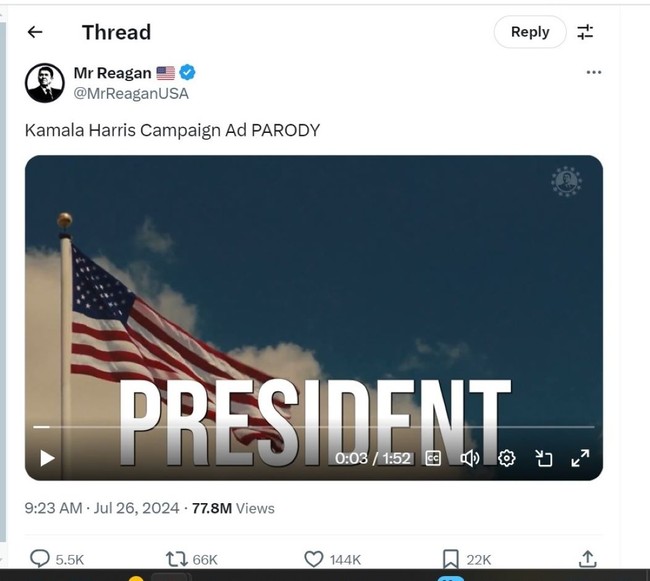 Now recall that the law says that:
Now recall that the law says that:
the text of the disclosure shall appear in a size that is easily readable by the average viewer and no smaller than the largest font size of other text appearing in the visual media.
That disclosure is required for every second of the video, and the full message would have to be in this case ‘This audio has been manipulated for purposes of satire or parody.’ Bluntly, we’re not sure that entire message could fit on the screen all at once if the font is as big as the word "president."
(And seriously, why can’t it be shorter and less clunky? Something like ‘satire: manipulated audio.’)
In any case, that becomes a problem with this law, rendering it less than narrowly tailored for that reason, as well. As in, why can’t they allow a smaller (and maybe even shorter) message? Why can’t they simply have it at the beginning or end of the video?
That is most of the issue, but the court did allow one part of all of this to go forward—the disclosure requirement for when you are dealing purely with audio—with absolutely no video. In that case, you only have to disclose before and after the audio clip plays, rather than covering the video with notices. We think, frankly, that this doesn’t entirely make sense in light of the rest of the court’s reasoning, but to be fair, Kohls wasn’t technically challenging that part. If someone came to court challenging that section more directly, the court might reconsider that part of the ruling.
But there is more to these statutes than just that. As we said earlier, the statutes also provide for injunctions to take these videos, audio clips and images down and for civil damages. Here’s what it says about civil damages:
A recipient of materially deceptive content distributed in violation of this section, candidate or committee participating in the election, or elections official may bring an action for general or special damages against the person, committee, or other entity that distributed or republished the materially deceptive content in violation of this section. The court shall also award a prevailing party reasonable attorney’s fees and costs.
This is frankly recipe for lawfare and we think they are doing it on purpose. Every person who sees it, every person who is running for office, every committee participating in an election, can bring a suit. And while we are not quoting the section on equity, the same people can also seek an injunction. According to a quick googling, there are almost 40 million people in California ... so we are talking potentially 40 million plaintiffs.
Furthermore, notice that you can only recover attorney’s fees … if you are the plaintiff. That means that if the plaintiff wins and the communication is prohibited by this law, the defendant pays the plaintiff’s attorneys’ fees. But if it is protected speech and the defendant wins, the defendant can’t force the plaintiff to pay his or her attorneys fees. So, this builds in a financial bias in favor of censorship.
And that is just one of the bills signed by Newsom. We won’t go into this at length but the most alarming is AB 2655, which has in essence required moderation of such deepfakes by platforms such as TSMSFKA Twitter. And if they don’t, around 40 million people can seek injunctive relief.
So, to put it simply, we are facing the possibility of lawfare on steroids if this law isn’t stopped in its tracks. It is stifling speech in the name of ‘protecting democracy’ (which is what we call 'an oxymoron, with an emphasis on the moron’).
And not for nothing, but let’s check back in with Ted Frank. This is what he said about some of the coverage and his contribution to the case:
(The @HamLincLaw team did most of the work. My main contributions were (1) to rewrite the first page of the brief and (2) fail to understand that “censorious” derives from “censure” and shouldn’t have been an adjective on that first page.)
— (((tedfrank))) (@tedfrank) October 2, 2024
Which led us to ask him a question that we were pretty sure we knew the answer to:
We’re nonprofit. Everything we do is pro bono and dependent on the generous contributions of our donors. https://t.co/JXKpAcI0Z6
— (((tedfrank))) (@tedfrank) October 3, 2024
Pro bono is a bit of legal latin that means in this case, he was acting charitably—that basically the entire firm is a charity. This is good because while the Constitution guarantees free expression, it is not exactly 'free' in the sense of being 'cost free' when the left decides to use lawfare to silence you. But for Christopher ‘Mr. Reagan’ Kolhs, this organization made it ‘free’ in the other sense of the word, too.
RELATED: Donald Trump Jr.: ‘Why is Kamala's DOJ Publicizing … a Bounty on My Dad’s Head?’ (and a Deep Dive)
Trump Speaks Out on Twitter/X About the Second Assassination Attempt: ‘The Bullets Are Flying.’
WATCH: Local Sheriff Verifies That Trump is Getting LESS PROTECTION Than Joe Biden
WATCH: Deliberate or Dementia? Biden puts on a … Trump Hat?! (UPDATE: More Video!)
VILE: The Onion Makes a Joke About Corey Comperatore’s Death

















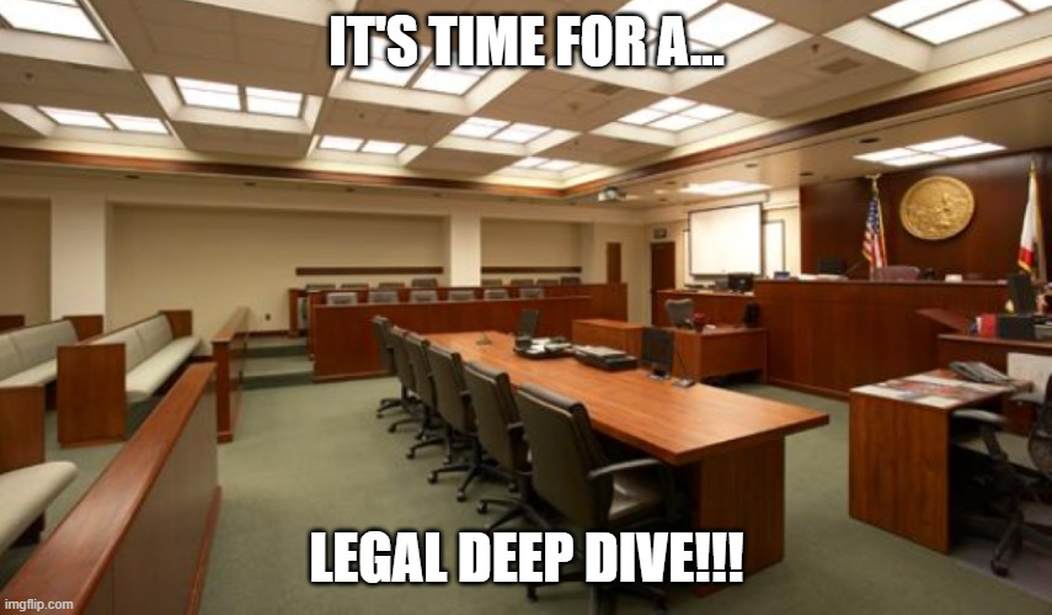

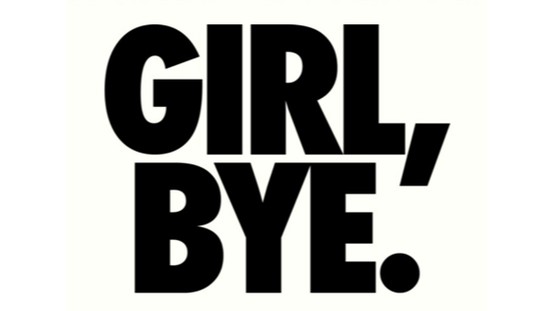

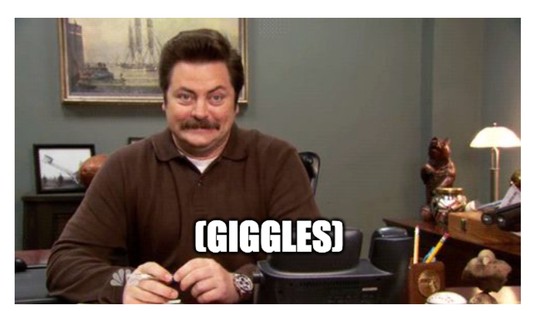

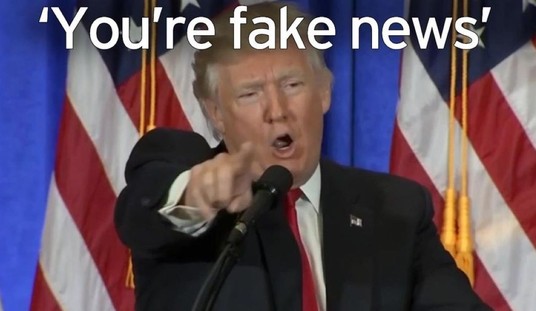

Join the conversation as a VIP Member